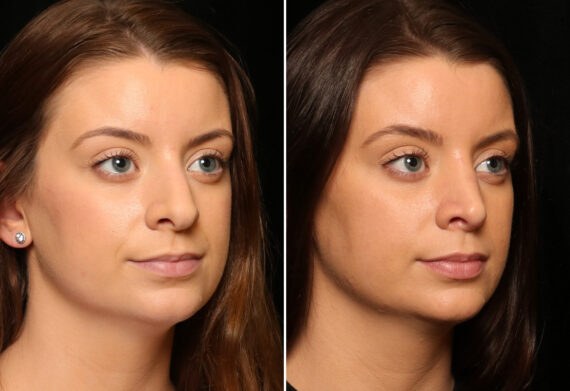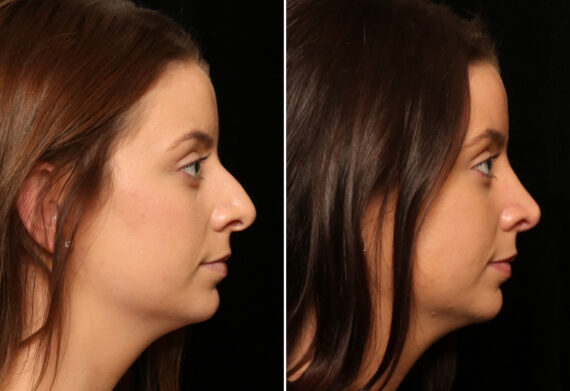Nasal surgery addresses several concerns, from an undesired shape to problems breathing. Septoplasty and rhinoplasty, while related to nasal surgery, serve distinct purposes and involve different techniques. Dr. Alexander Donath, an expert in facial plastic surgery, offers key insights to clarify the contrasts between these two procedures, ensuring patients can make well-informed decisions based on their individual needs.

Understanding the differences in goals, surgical methods, recovery times, and potential risks is crucial when contemplating nasal surgery. Careful consideration of each procedure’s impact on nasal functionality and aesthetics, supported by Dr. Donath’s extensive experience, can guide you toward the option that aligns best with your desires for health and appearance.
Purpose and Goals of Each Procedure
The Functional Role of Septoplasty
A septoplasty procedure is for those experiencing functional concerns like breathing difficulties or sinus infections due to a deviated septum. The goal: improving nasal function for easier breathing. This surgical intervention straightens the nasal septum, tackling the root cause of the patient’s respiratory issue by removing obstructions.
Cosmetic Aims of Rhinoplasty
Rhinoplasty procedures focus on the patient’s desire for improved appearance. Unlike septoplasty, rhinoplasty addresses cosmetic concerns like a bulbous nasal tip, reshaping the nose to enhance external appearance and potentially boost the person’s self-esteem.
Both septoplasty and rhinoplasty cater to different needs: septoplasty restores nasal function, while rhinoplasty works on aesthetic preferences.
Surgical Techniques and Approaches
Septoplasty Surgery Essentials
Septoplasty is a procedure to correct a deviated nasal septum, aiming for minimal disruption. The surgeon accesses this part through incisions inside the nostrils, performing the following steps:
- Repositioning: Adjusting the position of the cartilage and bone.
- Trimming: Removing any excess to clear blockages.
- Stabilizing: Securing the structure after adjustments.
It’s important to maintain the integrity of the nasal structure throughout the septoplasty.
Rhinoplasty Surgery Explained
Rhinoplasty surgery combines precision with aesthetic consideration. There are two primary approaches: closed rhinoplasties—with incisions inside the nostrils—and open rhinoplasties, which include an additional cut on the columella for more extensive structural work.
A surgeon’s task in rhinoplasty encompasses both breathing function and visual appeal. Closed rhinoplasties are particularly delicate, requiring working within the nose without direct visual access. The main steps in rhinoplasty are:
- Incisions: Making strategic incisions for structural access.
- Sculpting: Shaping the bone and cartilage for the desired appearance.
- Closing: Suturing incisions to integrate with the nasal profile.
Rhinoplasty surgery is individualized, with the surgeon’s expertise crucial to achieving personal aesthetic goals while also enhancing or preserving a functional nose.
Anesthesia and Preparation Requirements
Septoplasty Preparation
A detailed evaluation ensures suitability for the procedure—a candidate for septoplasty must undergo nasal structural examination, possibly with imaging tests. Advice typically includes medication adjustments and quitting smoking to improve healing.
Rhinoplasty Expectations
An experienced surgeon assesses the candidate for rhinoplasty, aligning surgical plans with health and aesthetic objectives. Discussions focus on anesthesia options and recovery, with recommendations for lifestyle adjustments, like stopping certain supplements.
For both surgical procedures:
- Patients must provide informed consent.
- The surgeon will outline what to expect post-surgery.
Recovery and Healing Time
septoplasty
Patients undergoing septoplasty can expect a recovery period of 1 to 2 weeks. During the recovery time, it’s important to:
- Keep nasal passages clear
- Avoid heavy lifting or strenuous activities
- Attend follow-up appointments
Most individuals return to normal activities within a week, but full healing of the nasal passage may take additional time.
Rhinoplasty
For a nose job, the healing process is longer, spanning several weeks. To support recovery, patients should:
- Limit facial movements
- Sleep with the head elevated
- Anticipate some nasal congestion
While initial changes are noticeable, the final shape of the nose may take up to a year to stabilize. Listening to your surgeon’s advice is vital for optimal healing in either procedure.
Potential Risks and Complications
septoplasty
Septoplasty, aimed at improving breathing, does have potential risks like any surgery. Patients may experience complications including:
- Infection: While uncommon, if not treated quickly, infections could worsen.
- Bleeding: Minimal bleeding is expected, excessive bleeding may need attention.
- Breathing difficulty: Some individuals might find nasal airflow challenging after the procedure.
Ensuring a capable surgeon performs the septoplasty can help minimize these risks.
Rhinoplasty
Rhinoplasty is a surgery designed to reshape the nose. It shares some potential risks with septoplasty, along with additional concerns specific to cosmetic procedures:
- Scarring: Incisions are designed to be hidden, though noticeable scars can occur if healing doesn’t proceed well.
- Asymmetry: It’s difficult to guarantee perfect symmetry, occasionally necessitating further surgery.
- Dissatisfaction with cosmetic results: There’s a chance that the surgical outcome might not meet individual expectations.
Patients considering either surgery should be aware of the possible complications and issues associated with each to make well-informed decisions.
Effectiveness and Patient Satisfaction
septoplasty
The success of septoplasty is determined by improved nasal function. Patients often experience a marked reduction in symptoms and an improvement in breathing. Key benefits include:
- Relief from nasal congestion
- Better airflow through the nostrils
- Fewer issues with snoring and sleep interruption
Rhinoplasty
Rhinoplasty not only improves aesthetic appearance but should also maintain or boost nasal function. Patient satisfaction relies on both the cosmetic appearance and functionality of the nose after surgery. Important outcomes for patient contentment are:
- Nose symmetry and proportion
- How well the nose fits with other facial features
- Preserved or improved nasal airflow
Patients compare the surgical outcomes with their initial expectations. They typically prefer a natural appearance that fits their facial contour. The balance between aesthetic improvement and functional assurance is essential for satisfaction.
Surgeon Expertise and Specialization Requirements
Training for Septoplasty
To perform septoplasty, aimed at correcting a nasal blockage to ease breathing, a skilled surgeon receives detailed training. This includes gaining knowledge of the nasal structure and surgical techniques. The training ensures they can address the intricacies of the nasal passage and improve the nose’s look and function.
Rhinoplasty: A Blend of Art and Medical Expertise
For rhinoplasty, which reshapes noses primarily for cosmetic surgeries, facial plastic surgeons must be both artistically inclined and medically precise. An expert in this area is adept at creating symmetry and has extensive training in various surgical methods to suit each patient’s distinct facial features. The goal is to enhance the nose’s form and function.
Surgeons in both specialties must engage in ongoing education to keep up-to-date with innovations and perfect their surgical techniques, aiming to better patient results.
- Extensive Training: Mastery in addressing a crooked nose, knowledge of nasal structure.
- Artistic Precision: Balancing aesthetic goals with individual facial structures for noses.
- Up-to-date Methods: Commitment to continuous learning in advanced surgical techniques.

Choosing Between Septoplasty and Rhinoplasty Surgery
Deciding between septoplasty and rhinoplasty depends on personal preferences tied to the distinct objectives of each procedure. A septoplasty corrects functional issues within the nasal cavities to improve airflow. Rhinoplasty, a cosmetic procedure, reshapes the nasal bones and modifies nose appearance for aesthetic reasons.
Before choosing, consider these factors:
- Goals: Prioritize whether you require resolution of breathing issues or an aesthetic update in your nose job.
- Health factors: Be aware of possible complications. Septoplasty, targeting nasal cavity irregularities, is generally less invasive.
- Cost: Cosmetic changes in nose appearance may not be covered by insurance, unlike corrections of structural defects.
- Outcomes: Think about the possible permanent changes in appearance against functional benefits.
It is advisable to discuss with an experienced plastic surgeon who can clarify specific concerns related to your nose, ensuring your choice reflects an informed decision. They can assess your issues, helping align procedure expectations with achievable results, considering aspects such as cost and potential complications.
Consult with a Facial Plastic Surgeon
Understanding the differences between septoplasty and rhinoplasty is crucial when considering nose surgeries. It’s essential to be well-informed about each procedure’s purpose, techniques, recovery processes, and potential outcomes. If you have questions or would like personalized advice on which procedure might be best for your specific needs, don’t hesitate to reach out for expert guidance.
To explore your options further and gain a professional perspective, we invite you to schedule a consultation with Dr. Donath, whose expertise in surgical treatments can help you make an informed decision. Your journey towards better nose shape and functionality can begin with a simple, informed step forward.


